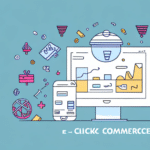Importance of Landing Page Optimization
Why Landing Page Optimization is Crucial for Conversions
Landing pages are essential for any digital marketing campaign, aiming to drive conversions such as newsletter sign-ups, ebook downloads, or purchases. Optimization is key to maximizing conversion rates, which directly translates to increased revenue. According to WordStream, businesses that prioritize landing page optimization can see conversion rates increase by up to 300%.
Beyond revenue, a well-optimized landing page enhances your brand's credibility, improves user experience, and reduces bounce rates. By tailoring your landing page to specific audiences, you not only increase the likelihood of desired actions but also gather valuable data on user preferences and behaviors, which can be used to further refine and improve your marketing strategies.
Key Elements of a High-Converting Landing Page
Understanding the Elements of a High-Converting Landing Page
A successful landing page comprises several critical elements: a compelling headline, persuasive copy, engaging visual elements, clear calls-to-action (CTAs), and streamlined form fields. Each element plays a vital role in guiding visitors toward taking the desired action. For instance, an eye-catching headline paired with a supportive subheading can effectively capture attention and encourage further engagement.
Crafting Compelling Headlines and Subheadings to Hook Your Audience
The headline and subheading are the first elements visitors encounter. They must be attention-grabbing and informative. A clear, concise headline that highlights the unique benefits of your product or service is essential. Subheadings should expand on the headline, providing additional context and encouraging readers to continue exploring the page.
Using numbers or statistics in headlines can enhance their effectiveness. For example, "5 Strategies to Boost Your Conversion Rates by 50%" provides a clear promise and piques interest.
Designing an Eye-Catching and User-Friendly Landing Page Layout
Design plays a pivotal role in user experience and conversion rates. A visually appealing, easy-to-navigate layout ensures that visitors can find information quickly without feeling overwhelmed. According to a study by Nielsen Norman Group, consistent and intuitive design elements significantly improve user engagement.
Ensure that your landing page is mobile-friendly, loads quickly, and uses a clear hierarchy of information. Incorporating social proof, such as customer testimonials or trust badges, can also build trust and credibility with your audience.
Creating Content that Addresses Your Target Audience's Pain Points
Your landing page copy should resonate with your target audience by addressing their specific needs and pain points. Demonstrating an understanding of their problems and offering effective solutions can significantly enhance engagement and conversions. Conducting market research through surveys or analyzing customer feedback can help identify these pain points and tailor your content accordingly.
Implementing Strong Calls-to-Action That Encourage Action
The call-to-action (CTA) is the most critical element on your landing page. It directs visitors to take the desired action, such as "Sign Up Now" or "Download Your Free Guide." To maximize effectiveness, use action-oriented language, ensure CTAs are visually prominent, and place them strategically throughout the page.
Regularly A/B testing different CTA variations can help determine which elements drive the highest conversions. Tools like Optimizely and Unbounce offer robust testing capabilities to optimize your CTAs based on real user data.
The Role of Social Proof in Increasing Landing Page Conversions
Incorporating social proof, such as customer testimonials, reviews, and case studies, can significantly boost credibility and trust. Displaying the number of satisfied customers or highlighting success stories creates a sense of reliability and encourages new visitors to convert. Studies by HubSpot show that social proof can increase conversion rates by up to 34%.
Optimization Techniques and Best Practices
A/B Testing Your Landing Pages: Best Practices and Tools
A/B testing involves creating two variations of a landing page to determine which performs better. This method helps identify the most effective elements, such as headlines, images, or CTAs. Best practices include testing one element at a time and ensuring a sufficient sample size for reliable results.
Popular A/B testing tools include Google Optimize, Optimizely, and Unbounce.
Tips for Optimizing Your Landing Pages for SEO and Organic Traffic
SEO optimization is essential for driving organic traffic to your landing pages. Incorporate relevant keywords naturally into your headlines and body copy, optimize meta descriptions, and ensure that all images have descriptive alt texts. Additionally, including internal links to related content can enhance your site's SEO performance.
According to Moz, on-page SEO factors like content quality, keyword usage, and internal linking significantly impact your search engine rankings and, consequently, organic traffic.
Best Practices for Mobile-Friendly Landing Pages
With over half of all web traffic coming from mobile devices, ensuring your landing pages are mobile-friendly is paramount. Use responsive design techniques to adapt to various screen sizes, minimize the use of heavy images and scripts that can slow down load times, and simplify navigation to enhance the mobile user experience.
Google’s Mobile-Friendly Test tool can help assess and improve your landing page’s mobile responsiveness.
Analyzing and Maintaining Your Landing Pages
How to Conduct a Landing Page Audit to Determine Areas of Improvement
Before optimizing your landing page, conducting a comprehensive audit is essential. Analyze key performance metrics such as bounce rate, time on page, and conversion rate using tools like Google Analytics.
Evaluate the design, layout, and messaging to identify any areas that may be causing friction or confusion. Look for opportunities to streamline content, enhance visual elements, and ensure that CTAs are clear and compelling.
Analyzing and Measuring the Success of Your Landing Pages
Continuous monitoring of your landing page’s performance is crucial for ongoing optimization. Track metrics such as conversion rates, bounce rates, and user engagement to assess effectiveness. Tools like Hotjar provide heatmaps and user behavior analytics that offer deeper insights into how visitors interact with your page.
The Importance of Continuously Monitoring and Updating Your Landing Pages
Landing page optimization is not a one-time task. The digital landscape and user behaviors constantly evolve, necessitating regular updates to maintain effectiveness. Stay informed about the latest trends and best practices in landing page design and SEO to ensure your pages remain competitive and continue to drive conversions.
Common Mistakes to Avoid When Optimizing Your Landing Pages
Avoid common pitfalls such as overcrowding your landing page with excessive text, using vague or misleading headlines, and implementing a cluttered layout. Ensure that your design remains clean and focused, your messaging is clear and concise, and the user experience is seamless.
Additionally, avoid neglecting mobile optimization and failing to test different elements, which can hinder your ability to identify and implement effective improvements.
Conclusion
By implementing these strategies for landing page optimization, you can create landing pages that drive maximum conversions and revenue for your business. Prioritize the needs of your target audience, focus on creating an engaging and user-friendly experience, and continuously monitor and refine your pages to achieve sustained success.






















